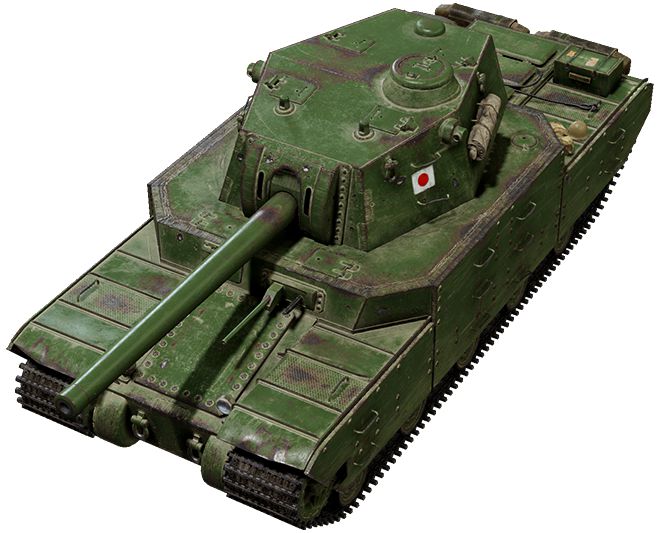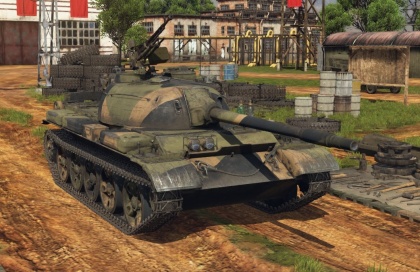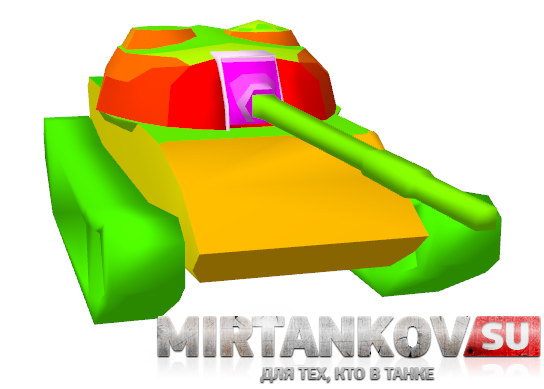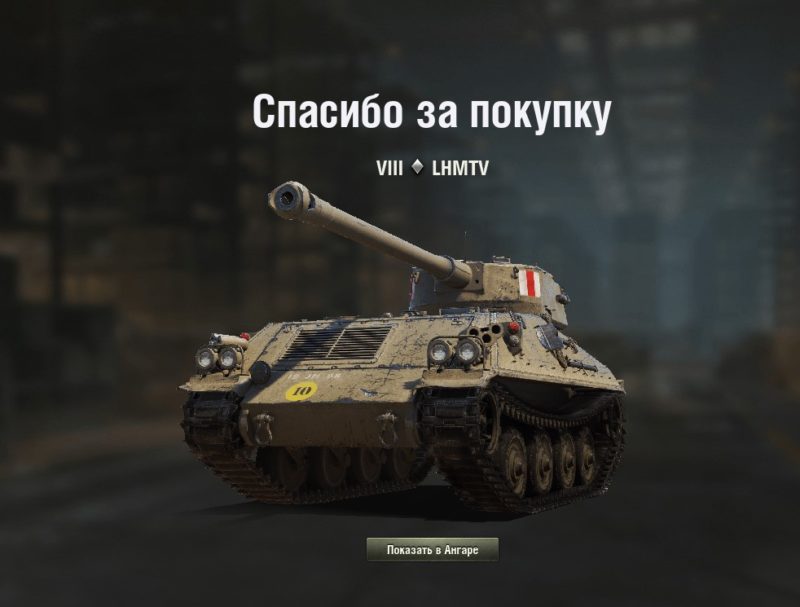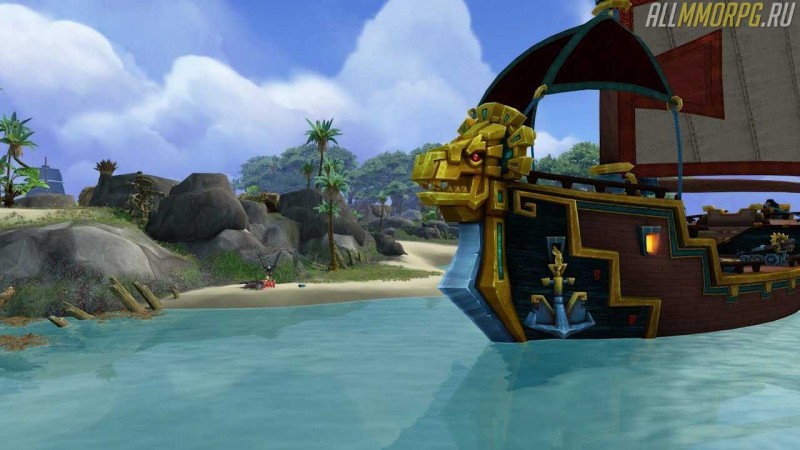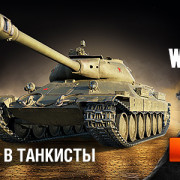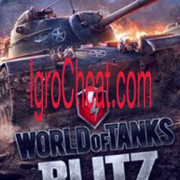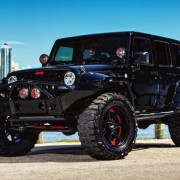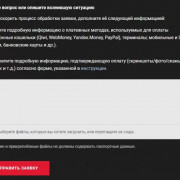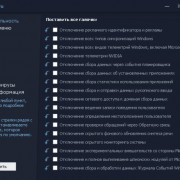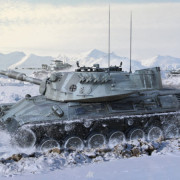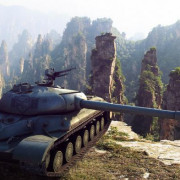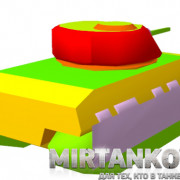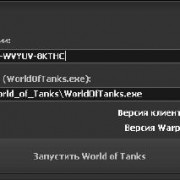Type 59 g
Содержание:
Историческая справка
-
Основная статья: История 59-16
В 1957 году китайскому руководству был представлен на рассмотрение проект нового лёгкого танка. Разработка 16-тонной машины была завершена в 1959 году. Новый танк имел четырёхкатковую ходовую часть с торсионной подвеской и задним расположением ведущего катка и был оснащён 57-мм, а позднее 76-мм орудием. Официально требования на легкий танк НОАК выдвинула исходя из того, что для действий в Южном Китае средние танки Type 59 были мало приспособлены, так как в тех местах было мало мостов нужной грузоподъемности. Фактически он разрабатывался как облегченная и упрошенная версия танка Type 59, так как промышленность не могла наладить выпуск средних танков в нужных объемах. Разработка нового танка началась на заводе №674 в 1958 году. Прототип назывался Type 59-16, что указывало на большое сходство с танком Type 59. Прототип был изготовлен в 1960 году и до 1962 года велись его доработки и испытания. В 1963 году новый лёгкий танк был запущен в серийное производство под обозначением Type 62 (также известен как WZ-131).
History
A line-up of Chinese armoured vehicles at Shenyang training base, in the foreground are two Type 59-II tanks. Note the bore evacuator in the middle of the barrel.
After the signing of Sino-Soviet Treaty of Friendship, Alliance, and Mutual Assistance, the Soviets agreed to assist China in building a tank manufacturing facility to manufacture the T-54A MBT in 1956. Initially, the tanks were assembled with Soviet-supplied parts, which were gradually replaced by Chinese-made components. The tank was accepted into service by the PLA in 1959, and given the designation Type 59.
The Type 59 MBT represented China’s first-generation tank development. Over the years, it was upgraded with various domestic and western technologies. When the PLA captured a Soviet T-62 from the Sino-Soviet border conflict in 1969, improvements based on the T-62 were incorporated into the T-59 design to become the Type 69 MBT, which was further upgraded with western technology and became the Type 79 MBT. The Type 59 was the beginning of China’s first-generation MBT, and the Type 79 last, superseded by the Type 80 second-generation MBT.
Ссылки
- Ресурсы World of Tanks
- Танковедение
- Тема на официальном форуме
- Записи боев на 59-16
- В сети Интернет
59-16 = 43 от Amway921 // YouTube
Техника Китая
| Лёгкие танки | I Renault NC-31 • II Vickers Mk. E Type B • III Type 2597 Chi-Ha • IV M5A1 Stuart • VI 59-16 • VI Type 64 • VII Type 62 • VII WZ-131 • VIII WZ-132 • VIII M41D • IX WZ-132A • X WZ-132-1 |
| Средние танки | V Type T-34 • VI Type 58 • VII T-34-1 • VIII Type 59 • VIII T-34-2 • VIII T-34-3 • VIII 59-Patton • VIII Type 59 G • IX WZ-120 • X • X 121B |
| Тяжёлые танки | VII IS-2 • VIII WZ-111 • VIII WZ-111 Alpine Tiger • VIII • VIII • IX WZ-111 model 1-4 • X • X WZ-111 model 5A |
| ПТ-САУ | II T-26G FT • III M3G FT • IV SU-76G FT • V 60G FT • VI WZ-131G FT • VII T-34-2G FT • VIII WZ-111-1G FT • VIII WZ-120-1G FT • IX WZ-111G FT • X WZ-113G FT |
Лёгкие танки
| Техника СССР | I МС-1 • II БТ-2 • II Т-45 • II Т-26 • II Т-60 • II Тетрарх • III БТ-СВ • III ЛТП • III М3 лёгкий • III БТ-7 артиллерийский • III Т-116 • III БТ-5 • III Т-127 • III Т-46 • III Т-70 • IV БТ-7 • IV Т-80 • IV Валентайн II • V А-20 • V Т-50 • VI МТ-25 • VI Т-50-2 • VII ЛТГ • VIII ЛТТБ • VIII ЛТ-432 • IX Т-54 облегчённый • X Т-100 ЛТ |
| Техника Германии | I Leichttraktor • II Pz.Kpfw. II Ausf. D • II MKA • II Pz.Kpfw. 38H 735 (f) • II Pz.Kpfw. 35 (t) • II Pz.Kpfw. I • II Pz.Kpfw. II • III 43 M. Toldi III • III Pz.Kpfw. 38 (t) • III Pz.Kpfw. III Ausf. E • III Pz.Kpfw. II Ausf. J • III Pz.Kpfw. I Ausf. C • III Pz.Kpfw. II Ausf. G • III Pz.Kpfw. T 15 • IV Pz.Kpfw. 38 (t) n.A. • IV Pz.Kpfw. II Luchs • V VK 16.02 Leopard • VI VK 28.01 • VII Aufklärungspanzer Panther • VII Spähpanzer SP I C • VIII leKpz M 41 90 mm • VIII leKpz M 41 90 mm GF • VIII HWK 12 • VIII HWK 30 • IX Spähpanzer Ru 251 • X Rheinmetall Panzerwagen |
| Техника США | I T1 Cunningham • II M2 Light Tank • II T1E6 • II T2 Light Tank • II T7 Combat Car • III M22 Locust • III M3 Stuart • III MTLS-1G14 • IV M5 Stuart • V M24 Chaffee • V M7 • VI T21 • VI T37 • VII T71 CMCD • VII T71 DA • VIII T92 • VIII M41 Walker Bulldog • IX T49 • X XM551 Sheridan |
| Техника Франции | I Renault FT • II D1 • II AM 39 Gendron-Somua • II AMR 35 • II FCM 36 • II Renault R35 • II Hotchkiss H35 • III AMX 38 • IV AMX 40 • V AMX ELC bis • VI AMX 12 t • VI Panhard AMD 178B • VII AMX 13 75 • VII Hotchkiss EBR • VII AMX 13 57 • VII AMX 13 57 GF • VIII Panhard EBR 75 (FL 10) • VIII Panhard AML Lynx 6×6 • VIII Bat.-Châtillon 12 t • VIII ELC EVEN 90 • IX AMX 13 90 • IX Panhard EBR 90 • X Panhard EBR 105 • X AMX 13 105 |
| Техника Великобритании | I Cruiser Mk. I • II M2 • II Cruiser Mk. II • II Light Mk. VIC • III Valentine • III Stuart I-IV • III Cruiser Mk. III • IV Cruiser Mk. IV • V Covenanter • VI Crusader • VII GSR 3301 Setter • VIII FV1066 Senlac • VIII LHMTV • IX GSOR3301 AVR FS • X Manticore |
| Техника Китая | I Renault NC-31 • II Vickers Mk. E Type B • III Type 2597 Chi-Ha • IV M5A1 Stuart • VI 59-16 • VI Type 64 • VII Type 62 • VII WZ-131 • VIII WZ-132 • VIII M41D • IX WZ-132A • X WZ-132-1 |
| Техника Японии | I Renault Otsu • II Type 95 Ha-Go • II Type 97 Te-Ke • III Type 97 Chi-Ha • III Type 98 Ke-Ni • IV Type 5 Ke-Ho |
| Техника Чехословакии | I Kolohousenka • II LT vz. 35 • III LT vz. 38 |
| Техника Польши | I 4TP • II TKS z n.k.m. 20 mm • II 7TP • III 10TP • IV 14TP |
| Техника Швеции | I Strv fm/21 • II Strv m/38 • II L-60 • III Strv m/40L |
| Техника Италии | I Fiat 3000 • II L6/40 |
Description
Essentially the Type 59 is identical to the early production Soviet T-54As, however there are some key differences. The Type 59 was not originally fitted with the infrared searchlight or main gun stabilization of the T-54.
The Type 59 has a conventional post-war layout with the fighting compartment at the front, an engine compartment at the rear, and a cast dome-shaped gun turret in the centre of the hull. The hull is welded steel varying in thickness between 99mm on the front lower glacis to 20mm on the hull floor. The turret varies from 39–100mm thick.
The driver sits in the front left of the hull, and is provided with a hatch immediately above his seat, which opens to the left. The driver has two pop-up periscopes which give coverage ahead and slightly to the right when buttoned up. The commander sits in the turret along with the gunner and loader. The commander’s hatch is on the turret left, with the gunner sitting forward and below him. The loader sits on the right of the turret and has a hatch above him. The turret has a non-rotating floor which complicated the crew’s operations.
The turret mounts a rifled 100mm Type 59 cannon, for which 34 rounds are typically carried. A Type 59T 7.62mm machine gun is mounted coaxially with the main gun. A Type 54 12.7mm anti-aircraft machine gun (a Chinese copy of the Russian 12.7mm M1938/46) is provided above the gunner’s hatch for which 200 rounds is carried. Additionally a Type 59T 7.62mm bow machine gun is provided for the driver, which fires through a very small hole in the center of the glacis. 3,500 rounds of 7.62mm ammunition are normally carried.
A Type 59 tank at China People’s Revolution Military Museum.
The turret has a powered traverse mechanism that is probably comparable to the T-54 traverse mechanism which can rotate the turret through 360 degrees in 21 seconds. Very early models of the Type 59 gun had manual elevation gear, later replaced with a powered system which allowed the gun to be aimed at between +17 and -4 degrees (the average depression for Western tanks is -10, which allows for better usage of hull-down tactics. Later models added vertical stabilization to make firing on the move practical. An infrared searchlight based night vision system was retrofitted to the tank with infrared periscope for the commander gunner and driver.
The tank is powered by a Model 12150L V-12 liquid cooled diesel engine, which develops 520 horsepower at 2,000 rpm. The engine feeds a manual gearbox with five forward and one reverse gear. A total of 815 liters of diesel can be carried internally in the tank, with a further 400 liters carried externally giving a maximum road range of 600 kilometers, or approximately 430km using only internal fuel. The tank has five road wheels on each side with a prominent gap between the first and second road wheel. The track is driven by a drive sprocket at the rear, with an idler at the front. It is notable that there are no return rollers. The suspension is a torsion bar system. Engine exhaust is on the left fender.
Ammunition is stored inside the turret, which increases the odds of a catastrophic secondary explosion should the tank’s interior be penetrated by enemy fire. Crew survivability is hence low.
